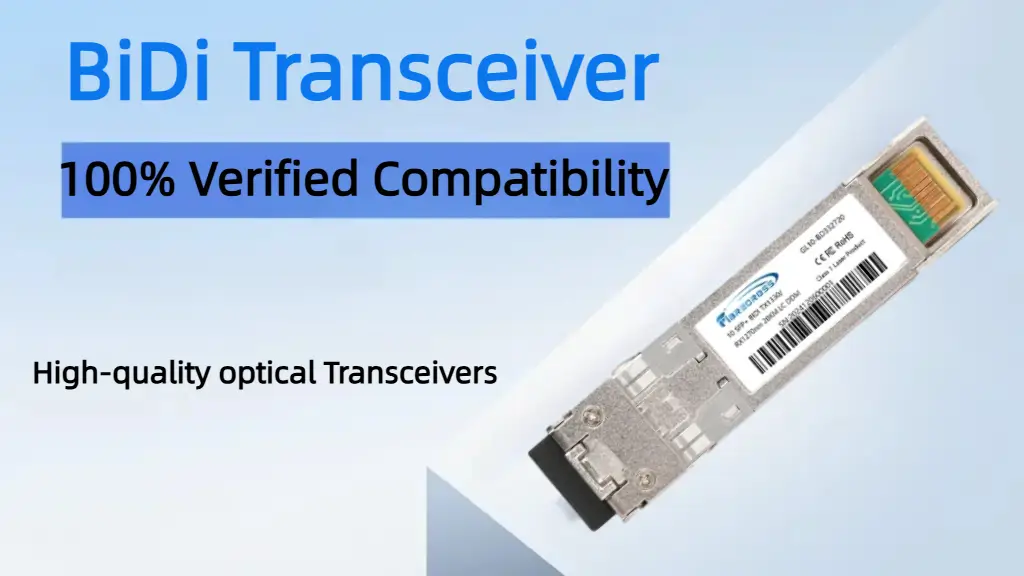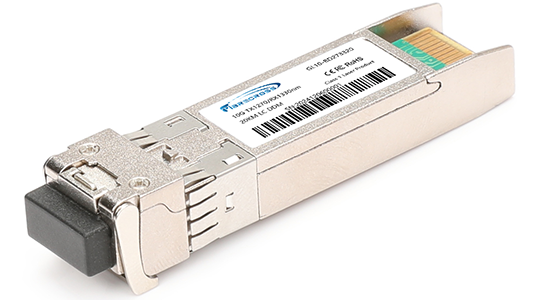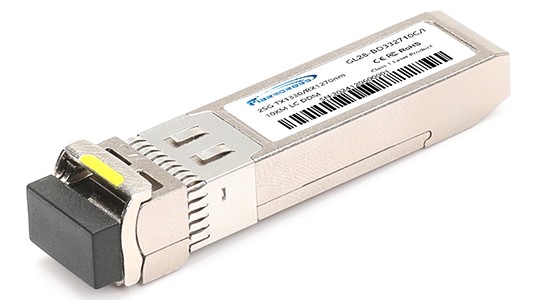What Is A BiDi Transceiver?
A BiDi transceiver (short for bidirectional transceiver) is an optical module designed to transmit and receive data over a single fiber strand by using two different wavelengths. Unlike traditional duplex transceivers, which require two fibers, a BiDi optical transceiver uses wavelength-division multiplexing (WDM) to achieve full-duplex communication on one fiber.
This approach is now widely used in data centers, telecom networks, and enterprise backbones, particularly as networks scale to 100G, 400G, and 800G.

How a BiDi Transceiver Works
Inside each BiDi module is a Bidirectional Optical Sub-Assembly (BOSA) that integrates:
A laser transmitter
A photodiode receiver
A WDM filter
For example, one BiDi module might transmit at 1270 nm and receive at 1330 nm, while its paired module does the opposite. This ensures simultaneous full-duplex communication.
Advantages of BiDi Optical Transceivers
Halves fiber usage – One fiber instead of two.
Reduces cost – Fewer patch panels, connectors, and fibers.
Supports upgrades – Works with existing duplex cabling.
Simplifies cabling – Especially in high-density racks.
Future-proof – Scales from 10G up to 800G BiDi.
BiDi vs. Traditional Duplex Transceivers:
| Feature | BiDi Optical Transceiver | Traditional Duplex Transceiver |
|---|---|---|
| Fiber Usage | One fiber strand with WDM (Tx/Rx wavelengths) | Two fibers (one Tx, one Rx) |
| Connectors | Simplex LC (SFP) or duplex LC (QSFP) | Duplex LC or MPO/MTP |
| Upgrade Path | Reuses cabling for 40G/100G/400G/800G | Often requires new MPO cabling |
| Cabling Cost | Lower – 50% less fiber needed | Higher – more fibers and connectors |
| Best Use Case | Fiber-limited or high-density data centers | New backbone builds with ample fiber |
BiDi Transceiver Product Examples:
| Speed | Form Factor | Wavelengths (Tx/Rx) | Reach | Fiber Type | Example Product |
|---|---|---|---|---|---|
| 10G | SFP+ BiDi | 1270/1330 nm | 10–20 km (SMF) | OS2 SMF | FS 10GBASE-BX SFP+ |
| 40G | QSFP+ BiDi | 850/900 nm | 100 m (OM3), 150 m (OM4) | OM3/OM4 MMF | FS 40GBASE-SR BiDi |
| 100G | QSFP28 BiDi | 850/910 nm | 70 m (OM3), 100 m (OM4) | OM3/OM4 MMF | FS 100GBASE-SR1.2 |
| 800G | QSFP-DD/OSFP BiDi | 850/910 nm (WDM pairs) | 60–100 m (OM4/OM5) | OM4/OM5 MMF | FS 800G BiDi (emerging) |
Why 800G BiDi Is the Future
With cloud-scale networks pushing beyond 400G, 800G BiDi transceivers are emerging as the most practical solution for data center upgrades. Unlike traditional 800G optics that rely on complex MPO-16 connectors, 800G BiDi modules run on duplex multimode fiber, drastically reducing cabling costs.
This makes BiDi technology the most cost-effective and scalable path from 10G all the way to 800G.
Conclusion
A bidi transceiver is more than just a fiber-saving solution—it is a scalable, cost-efficient, and future-proof technology for modern IT networks. By halving fiber requirements while supporting speeds from 10G up to 800G, the bidi optical transceiver has become a cornerstone for data centers and enterprises worldwide.
FAQ About bidi optical transceiver
No. BiDi optics must be deployed in matched pairs with complementary Tx/Rx wavelengths.
BiDi optics can work on both singlemode (SMF) and multimode (MMF) fibers, depending on the module type.
They allow next-gen data centers to upgrade to 800G while still using duplex MMF cabling, avoiding costly MPO-based rewiring.
Vendors like Fibrecross, Cisco, Arista, and Juniper offer BiDi optics in SFP, QSFP, and QSFP-DD/OSFP formats.




